Discover the secrets of the ninja at Iga Ueno Castle near where they originated from in feudal Japan
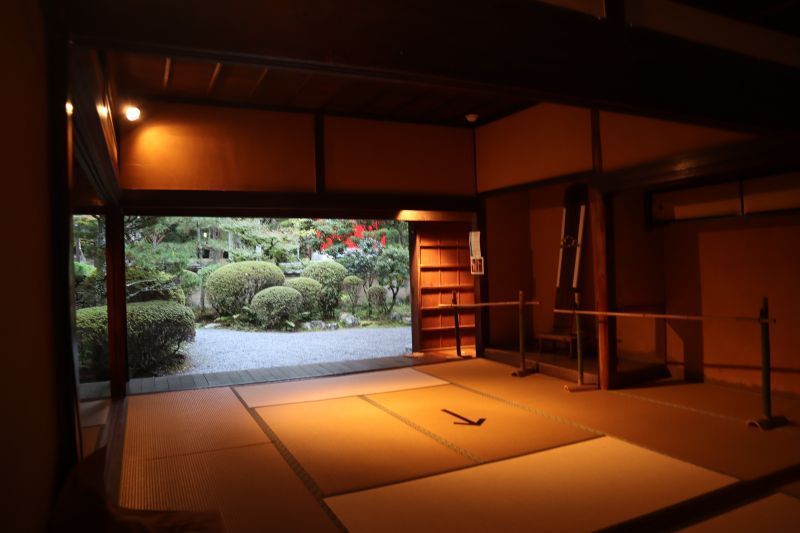
The ninja hold a special place in Japanese history and are known around the world as symbols of stealth and unconventional warfare. These mysterious spies of feudal Japan practiced the art of ninjutsu, which was developed in Iga (now Mie Prefecture) and Koga (now Shiga Prefecture). Remote mountain villages in these areas devoted to ninjutsu training produced what are historically considered to be the most highly skilled ninja of the period. At the fun and informative Ninja Museum of Iga-ryu, guests can see many ninja weapons and tools as well watch video and live presentations showing how these skilled spies applied their tactics. It is also possible to try some weapons and see if you have any ninja skills before picking up some souvenirs at the gift shop. After leaving the museum, a visit to beautiful Iga Ueno Castle will give you the chance to imagine ninja sneaking around the castle grounds during feudal times.
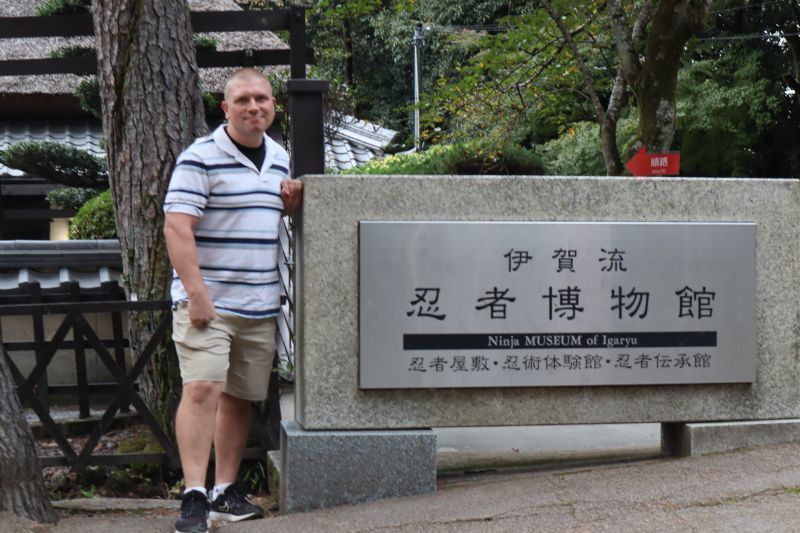
About the Author:
I live in Gifu with my family and I have always been intrigued by the ancient martial arts of Japan. Growing up in America, I watched movies featuring ninja and their secret ways. Any trip to Mie Prefecture is a great chance to learn more about these interesting spies of feudal Japan.
To start my ninja experience, I visited the Ninja Museum of Iga-ryu to learn more about their history, weapons and tactics. The museum is located in Ueno Park and is next to stunning Iga Ueno Castle. The grounds were gorgeous and I could feel the incredible history of the place as soon as I arrived in the park.
After my museum experience, I would visit the nearby castle and have a chance to imagine the ninja sneaking into all of the secret spots. Seeing the sloping stone walls and white castle in the distance was amazing and I knew it was going to be a very special day of learning more about ancient Japanese culture.
When I entered the first building that was part of the Ninja Museum of Iga-ryu, I was immediately transported back in time. The dark wood and fragrant tatami mats combined to recreate a perfect example of the traditional Japanese aesthetic from feudal times. It is always a pleasure for me to be surrounded by the deep history of Japan and let myself appreciate the timeless beauty of the ancient structures.
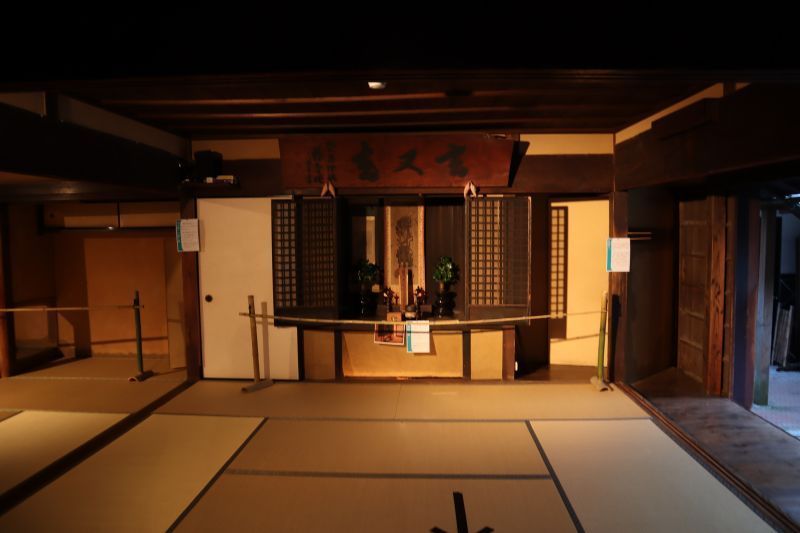
Because ninja had to behave as if they were normal people when acting as spies , they had to keep their weapons hidden to avoid suspicion and not be identified. If they needed their weapons,they also had to be able to easily retrieve them. I was curious to see where the weapons were stashed in each room that I entered.
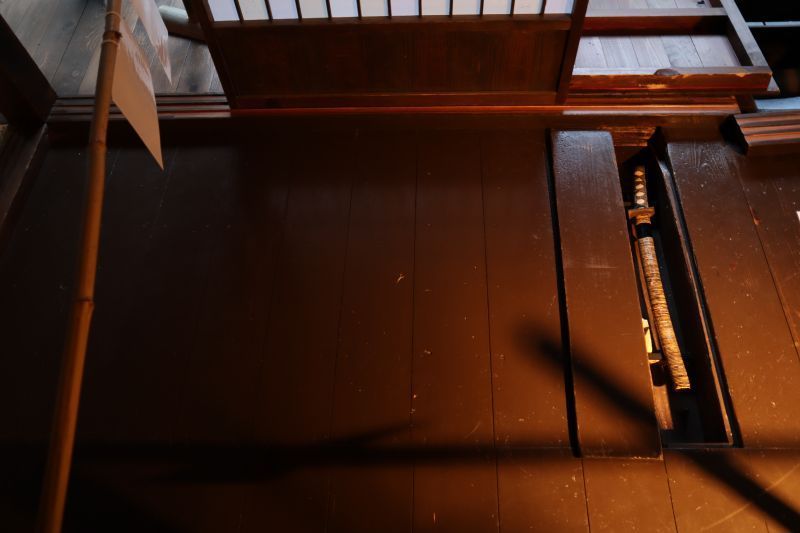
Ninja used many different tools and weapons to practice the art of ninjutsu. They did use swords as the samurai did, but ninja swords were adapted to their style of combat and usage. The swords were much shorter than those used by samurai and the design was customized for each ninja to match their skills.
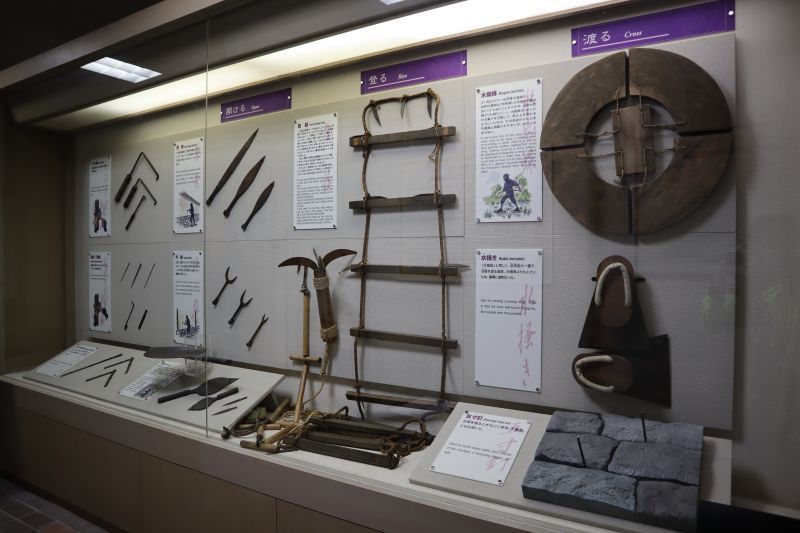
The most iconic ninja weapon is the “shuriken”, which translates directly into English as “hidden hand blade”. Shuriken include throwing knives and the more famous throwing stars. When I was young, throwing stars were the weapons I always associated with ninja and I was excited to see the various styles in the museum’s collection.
It was also interesting to learn that some weapons were extensions of farm tools because the ninja would sometimes pretend to be farmers when hiding their identity. Some examples of this style of weapon are mowing sickles and gardening scythes that could be used to cut an enemy.
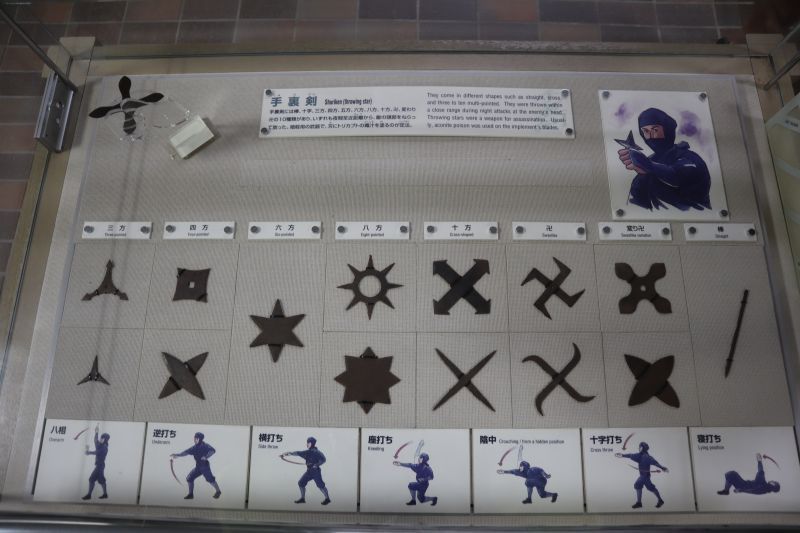
You will not be disappointed by the Ninja Museum of Iga-ryu’s throwing star collection. They looked deadly and very cool. I had not seen many of the designs before and I was reminded of the movies I loved watching as a boy that made me fantasize about being a ninja.
It was a great visit to the museum and I had learned so much about ninja that I didn’t know before my trip to Iga. The weapons were interesting and the techniques that I witnessed in the presentations were mind blowing. Now that I had more knowledge of how the ninja practiced the art of ninjutsu, it was time to head over to Iga Ueno Castle and learn even more about the history of this special region in Japan.
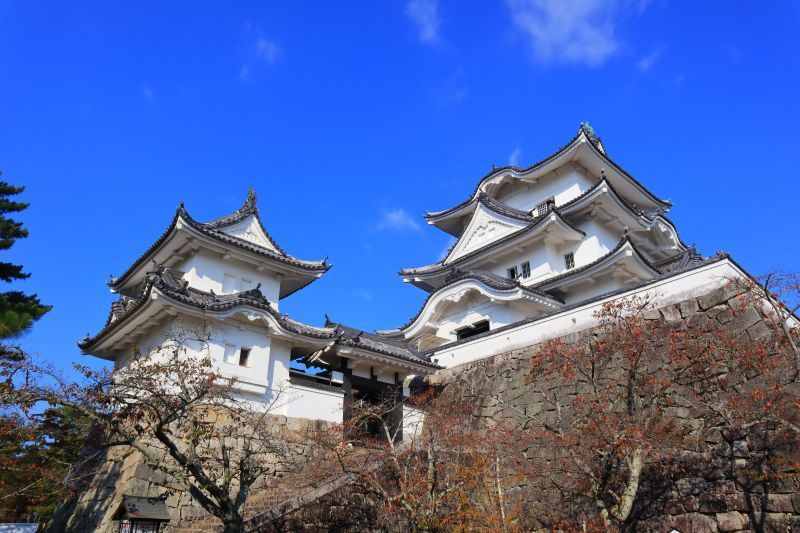
Iga Ueno Castle is also known as “Hakuho” or “White Phoenix” Castle because of its beautiful architecture and floor plan. The “tenshu” (the highest tower of the castle) was reconstructed out of wood in 1935 and it houses a museum containing important artifacts from the region’s history.
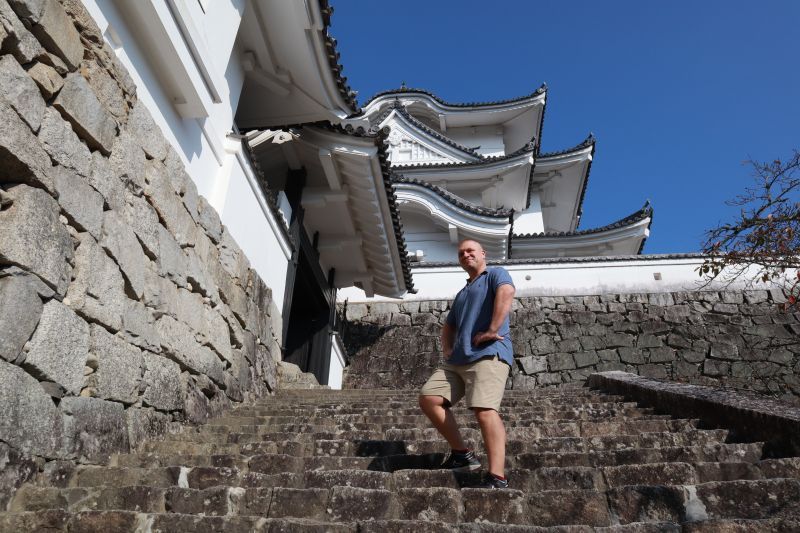
An interesting fact about Iga Ueno Castle is that the castle walls are 30 meters high, which is the highest of any castle in Japan. It is a truly majestic structure and the combination of the stacked stone walls and white castle exterior is breathtaking when you first see it. Of all the castles I have seen in Japan, it is definitely one of the most striking.
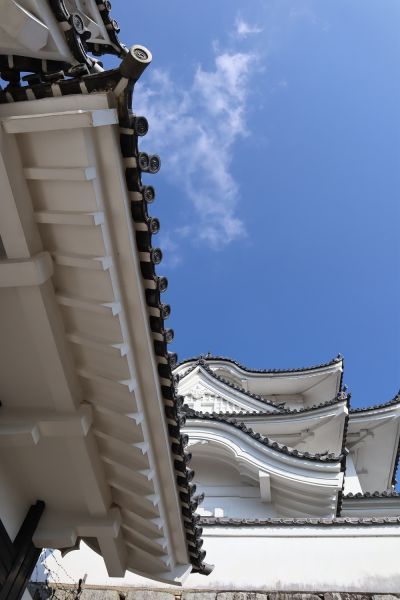
I am always amazed by the detailed design that is incorporated into traditional Japanese buildings. On this castle, the dark tile used on the roof contrasted wonderfully with the white walls resulting in a simple and elegant appearance. On the day I visited, there was a bright blue sky and the castle was stunning against that backdrop.
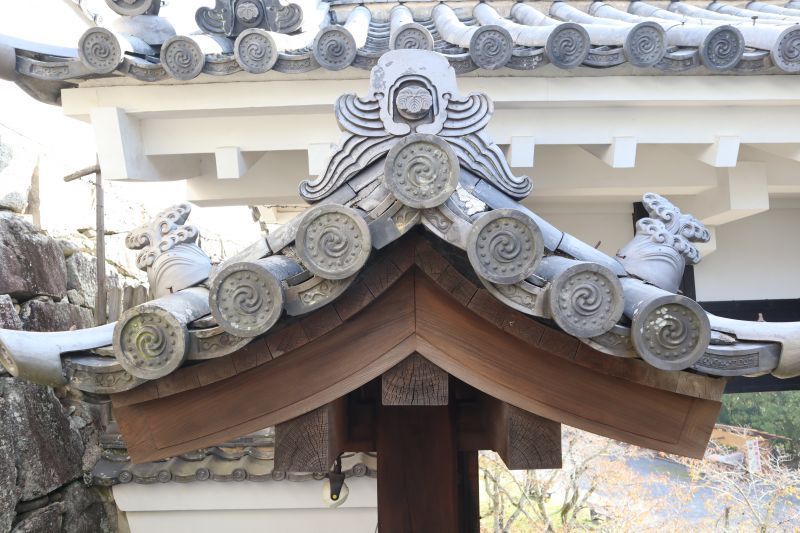
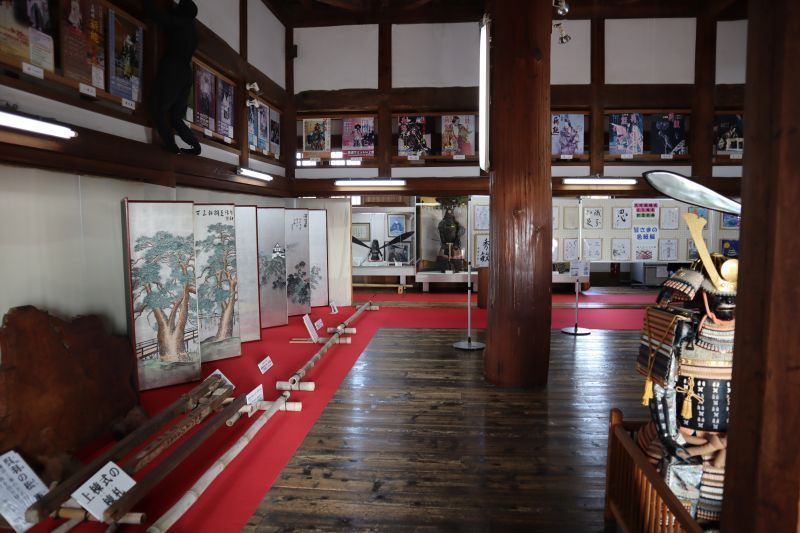
When you enter the castle, you are immediately surrounded by an extensive collection of amazing cultural artifacts that all have historical significance in the region. From screens depicting artistic renditions of feudal Japan to complete sets of samurai armor, there is something for every visitor to appreciate as they take a tour.
There was so much history contained inside the castle and great care had been taken to display each item appropriately. I was very interested in the weapons collection that had many items that I hadn’t seen in person before. The different examples of artwork that had been created in the Iga region over the centuries were amazing and the depth of Japanese culture and history moved me. This castle told the story of Iga and how it had changed over hundreds of years through multiple historical eras.
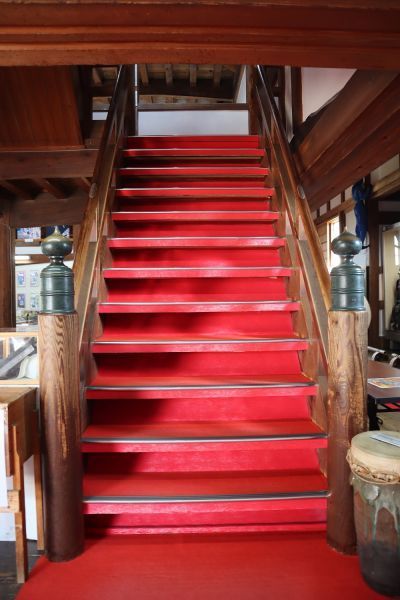
The entire castle is constructed of wood and everywhere you look there are examples of traditional Japanese carpentry and design. As I moved around the building, I started to imagine life in feudal Japan and how ninja would infiltrate different parts of society as spies. The collection of art and artifacts also helped to tell the intriguing story of Iga’s history.
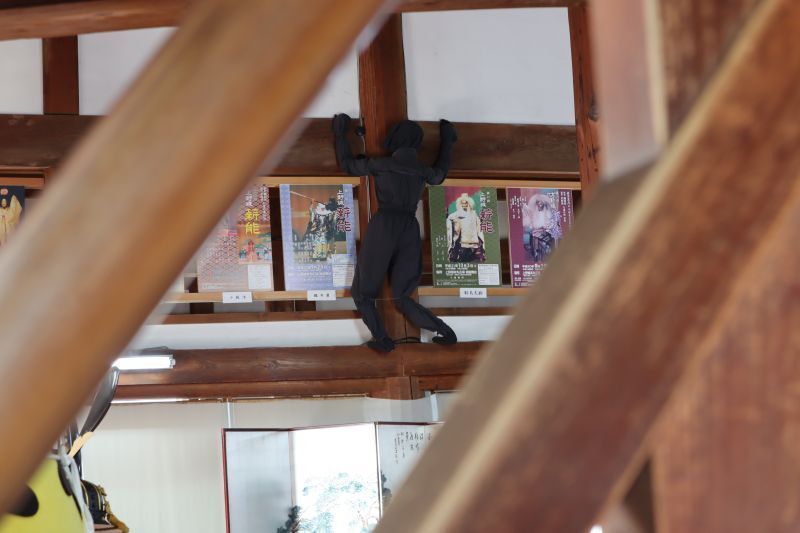
As I was looking at a display of artwork, something high on the wall caught my eye. Imagine my surprise when I looked up and saw a ninja clinging to the wooden beams and sneaking around on a mission. This brought a smile to my face and reminded me of the playful nature that Japanese people are famous for. It was a small touch, but in a building filled with serious art and weapons, I was glad to see that the caretakers could have fun too.
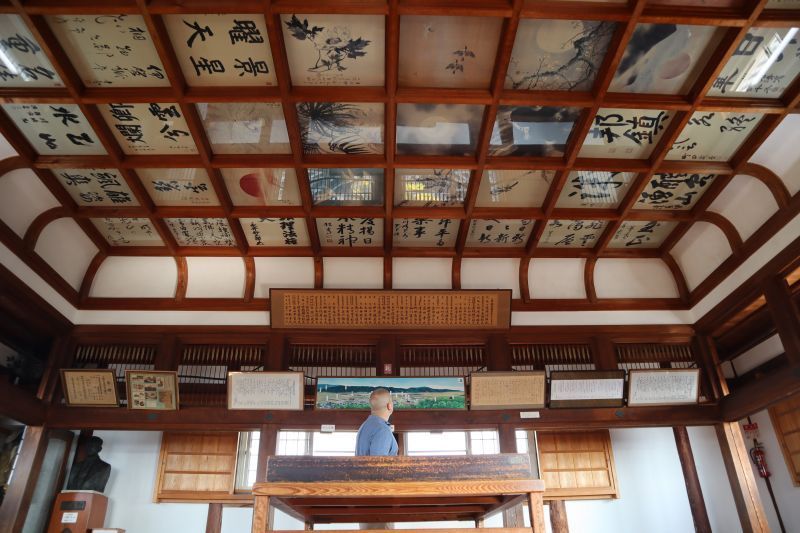
Coming from a country that has only existed for about 250 years, I am often blown away by the history and culture of Japan. Every year that I live here, I gain more understanding of how this ultra-modern nation was formed over the centuries. The extensive records of the past and desire to share that information with future generations is something that I know has a major impact on what it means to be Japanese.
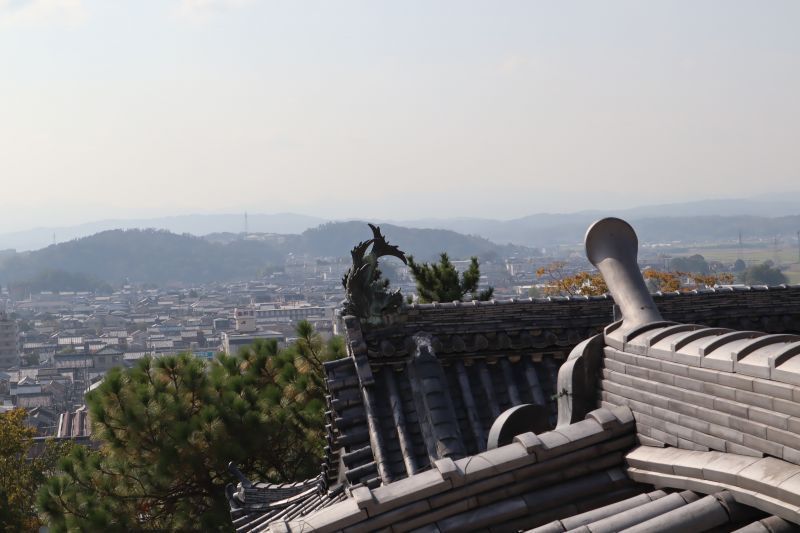
It had been a great day in Iga and I will never forget what I learned about ninja at the Ninja Museum of Iga-ryu. There was so much I didn’t know about the unique spies before my visit and I am now an even bigger fan. My time at Iga Ueno Castle was almost like a religious experience, in the sense that there is so much reverence and respect for tradition inside the building. For travelers who want to combine history, learning and hands-on experiences into a great day of fun, spending some time at Ueno Park in Iga is worth the trip.